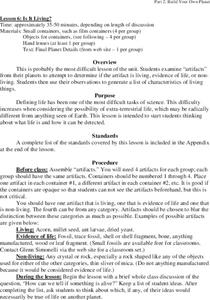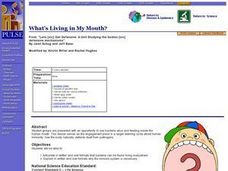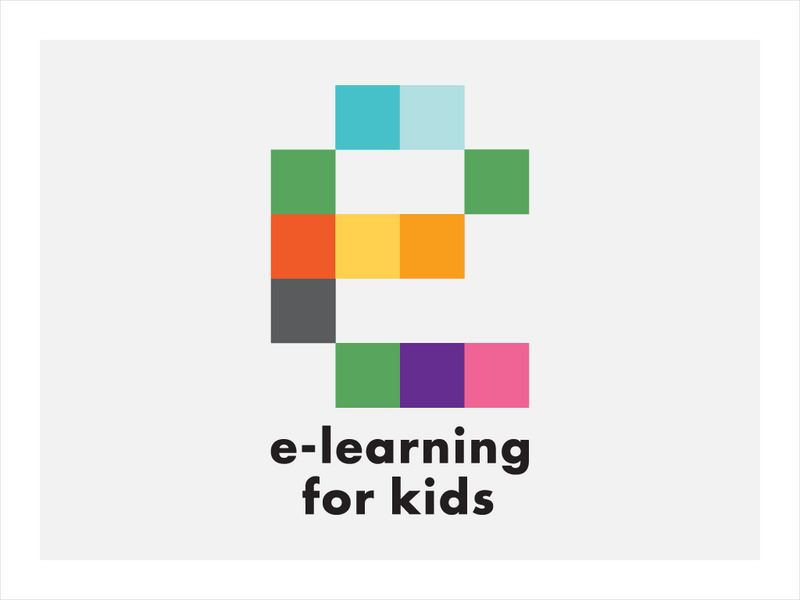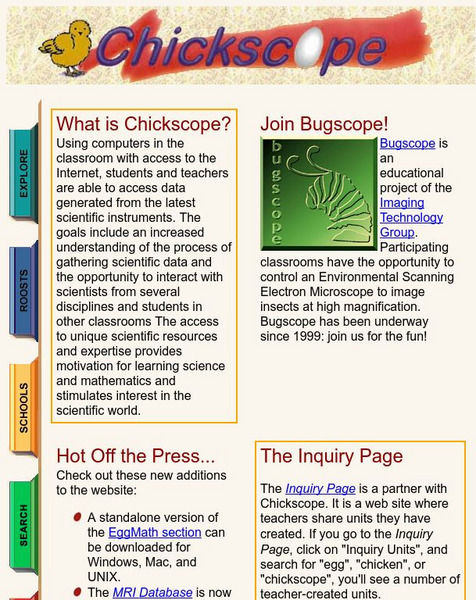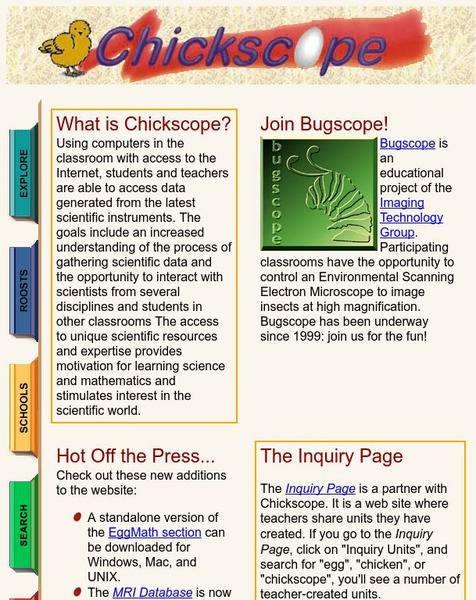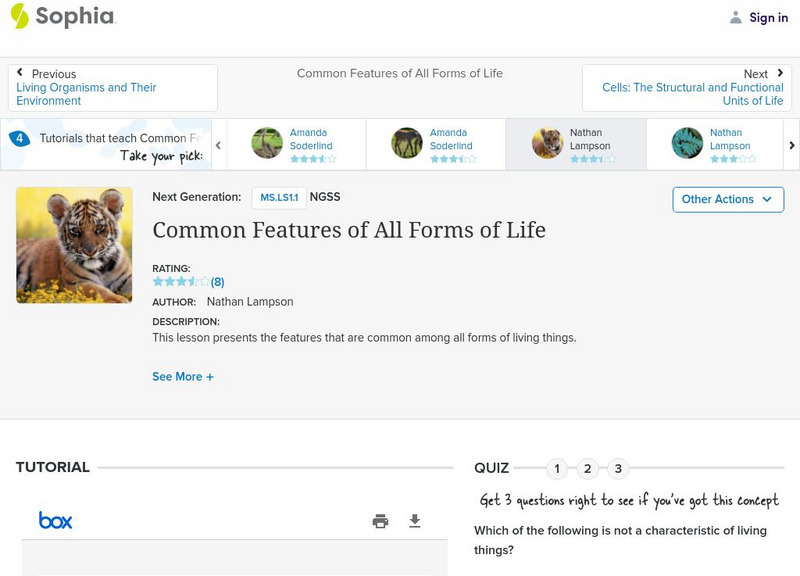Curated OER
Is it alive?
Kids in grades K-2 increase their logical reasoning and visual discrimination skills by determining which things shown are alive. They use the criteria that all living things move on their own to mark each image as alive or not.
Curated OER
Is It Alive?
Students engage in an activity that demonstrates whether something is alive or not. In this physiology lesson students divide into groups and sort cards into categories.
Curated OER
Is It Living?
Students investigate the definition of life and alive in the context of a unit that is involved with building their own planet. They participate in a class discussion about defining life, and in small groups analyze artifacts to...
Curated OER
What's Living in My Mouth?
High schoolers articulate in written and oral formats that bacteria can be found living everywhere. They explain in written and oral formats why the immune system is necessary. Students are presented with an opportunity to see bacteria...
CK-12 Foundation
Ck 12: Characteristics of Life
[Free Registration/Login may be required to access all resource tools.] Videos, texts, activities, and assessments about the factors that characterize living things.
E-learning for Kids
E Learning for Kids: Science: Chile: What Are the Life Processes in Plants?
Anaken lives with his brother Kiko on a beautiful island. Today they are learning about life processes. Join them and find out what they learn.
E-learning for Kids
E Learning for Kids: Science: Denmark: How Can We Define Living and Non Living Things?
Martin Dahl, a Danish scientist, does research on living things and non-living things. Come see what he discovers.
E-learning for Kids
E Learning for Kids: Science: Marshall Islands: How Can We Tell Living Things From Non Living Things?
Andrea lives on the Marshall Islands, and she will teach you about living and nonliving things.
E-learning for Kids
E Learning for Kids: Science: Scotland: How Can We Group Living Things Based on Characteristics?
Lilly is from Peru, and she's traveling the world. Right now, she's in Scotland. Join her while she studies living and non-living things.
University of Illinois
University of Illinois Urbana Champaign: Chickscope
Learn how to build your own incubator and download your own "EggMath." Learn about mitosis, genetics, and more. Don't miss the "Yolk of the Day." This site is designed to allow classrooms to collaborate over the Internet with other...
University of Illinois
University of Illinois Urbana Champaign: Chickscope
Learn how to build your own incubator and download your own "EggMath." Learn about mitosis, genetics, and more. Don't miss the "Yolk of the Day." This site is designed to allow classrooms to collaborate over the Internet with other...
Sophia Learning
Sophia: Common Features of All Forms of Life
This slide show describes the seven common characteristics of all living things.
The Wonder of Science
The Wonder of Science: Ms Ls1 1: Cell Theory
Work samples, phenomena, assessment templates, and videos that directly address standard MS-LS1-1: cell theory.
Khan Academy
Khan Academy: Life and Purpose
This article describes the differences between non-life and life. Learn how we classify something as living or nonliving.
Khan Academy
Khan Academy: Gallery: What Is Life?
How do we define what is life? Use this gallery to learn about how we define whether an object is alive or not.
Library of Congress
Loc: Poetry 180: Immortality
A poem about the topic of "immortality", as in the story of Sleeping Beauty, is shared within two stanzas.
Michigan Reach Out
Reach Out Michigan: Being Alive
This site provides a basic lesson plan that classifies objects as alive or not alive. Good for early elementary.
Sophia Learning
Sophia: Common Features of All Forms of Life: Lesson 2
This lesson presents the features that are common among all forms of living things. It is 2 of 4 in the series titled "Common Features of All Forms of Life."
Sophia Learning
Sophia: Common Features of All Forms of Life: Lesson 3
This lesson presents the features that are common among all forms of living things. It is 3 of 4 in the series titled "Common Features of All Forms of Life."




